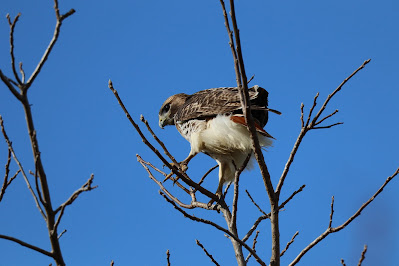Grand Bend, North Lambton!
We met some fellow birders at the Grand Bend Beach on November 26th, all hoping to find some rare species. We had an elevated viewing spot and the plexiglass railing provided a bit of shelter from the wind.
I wasn't able to get my eyes on the Little Gull that soared past, but we were able to look down on species flying past including these Red-breasted Mergansers.
Ring-billed Gulls were abundant. 14 bird species were observed for a total of 214 individuals during our 1 hour, 20 minute stay at the beach.
3 Bald Eagles flew overhead; 2 adult, 1 immature.
Grand Bend Lighthouse
Pond outside the fence at the Grand Bend Sewage Lagoons: We asked for permission to walk along the roadway, but were denied access, even though we promised we wouldn't go for a swim. LOL Sewage Lagoons can meet the habitat requirements of many species. Some municipalities allow entry, others do not.
We parked at the Ipperwash MNR parking area which gave us a chance to explore both the beach and a few inland trails adjacent to the Dunes and Swales property. Nothing unusual to report but we did find a Purple Finch!
Beach Toy Library - I assume for summer use only.
Our last stop was at the Forest Lagoons, where walking is permitted. By this time, we had blue sky and sunshine! As we approached the parking area, a Red-tailed Hawk kept a close eye on us, but didn't flush!
The soft bugling call of Tundra Swans could be heard overhead. When they emerged from the cloud cover, we finally got to see the flocks. They were scattered, and probably considered stopping, but after circling they continued their southern migration. Many ducks could be seen in one of the cells including 96 Green-winged Teal, 52 Bufflehead and 30 American Coot!



















































